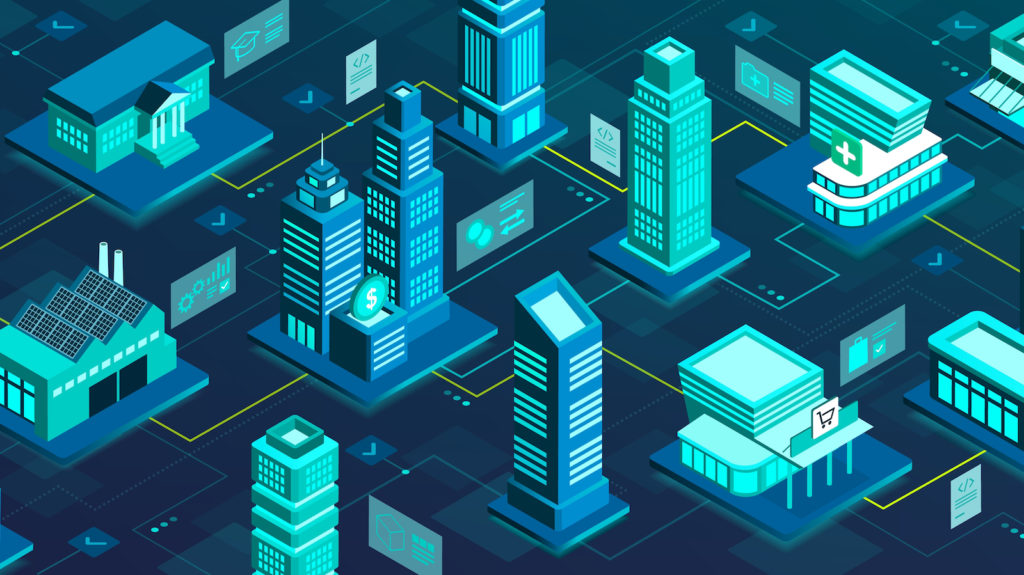Human activities have caused 1.0°C of global warming above pre-industrial levels and this is likely to reach 1.5°C between 2030 and 2052 if it continues to increase at the current rate, reads the highly-referenced IPCC climate report. Two industries have become central to addressing this existential crisis; the power sector that represents almost all of the electricity supply, and the buildings industry that represents about 40% of energy consumption and 40% of greenhouse gas emissions. These two industries have the ability to help solve the climate issue and their failure to act will likely lead to a global environmental crisis.
“The world’s relationship with energy is transitioning as we attempt to mitigate the impact of climate change. In the energy systems of the future, residential, commercial, and industrial consumers will no longer be passive,” reads ‘Driving the Energy Revolution’ a recent whitepaper from Siemens. “They may own generation sources, such as solar panels; they may be able to offer a service, such as giving flexibility for when energy may be used; or they may make lifestyle choices which have an impact on their energy consumption. Because of this, the interface between the grid and these distributed end users will only grow in importance. This interface is called the grid edge.”
As the name suggests, the grid edge is the user-facing boundary of the electricity network. This is the place where supply meets demand and was traditionally only home to the power inverters and electricity meters of buildings and infrastructure. However, as smart buildings rose on one side of the edge and the smart grid evolved on the other, new opportunities emerged. Today, an intelligent grid edge promises to enable the real-time transfer of data between demand and supply systems, which will facilitate distributed renewable energy generation, allow consumers to become prosumers, and even turn buildings into virtual power plants. The grid edge is the next step for buildings and the grid in our path to a smarter and more efficient world.
“Grid edge is a term used to describe technologies and business models that advance a decentralized, distributed, and transactive energy grid. This includes physical infrastructure assets (such as smart meters), network or control software, applications, and data analytics tools,” explains GTM Research. “That means that utilities, regulators, and companies are creating ways to go beyond the traditional electric grid structure and enable customers to take a more active role in generating and trading electricity. While there are still several challenges to address, grid edge technologies can help contribute to a more efficient, flexible, and reliable electricity system.”

Since electrification took hold in our societies the grid has existed to provide buildings with the stable flow of electricity demanded by business, industry, and residential activities. Now, in a pseudo role-reversal, the grid needs help from intelligent buildings to stabilize the energy system in this age of environmental crisis, resource scarcity, and intermittent generation. Supply and demand resources must now work together rather than against each other, and the grid edge is the key to making that happen.
“In this new paradigm, real-time energy management at the level of the end-user and at the building level, is more important than ever — to help grid operators keep the lights on and boilers running. The problem is that most buildings still lack even the most basic energy data and system controls, both of which are needed in order to truly make energy usage reactive to real-time stress signals from the energy grid,” says grid industry veteran, Gordon Feller, in a T&D World article. “Historically, it has been difficult and expensive to extract and analyze data from both utility meters and building equipment. The sectors of energy management and building automation are both siloed, niche sectors with very few companies who can bring the two together, effectively bridging the grid edge to the building edge.”
Before we can harness the potential of the grid edge, we must first develop smart buildings and the smart grid much more than we have so far. The grid edge is like an infinite wall of two-way connection points and the more elements that plug into that wall, the stronger the whole energy system becomes. However, in order to connect to this intelligent edge you must be smart, giving buildings another big motivation to adopt smart technology. The vast efficiency and environmental benefits must now also drive national policy, as we saw with President Biden’s grid-interactive efficient buildings roadmap but with much better incentives, if we are to connect enough elements to make an impact on climate change soon, before it’s too late.
According to the World Economic Forum’s (WEF) Future of Electricity report, grid edge technology has the potential to drive growth by over US $ 2.4 trillion in the power industry over the next decade. Through new energy trading opportunities, increased energy storage capacity, sector coupling, electric vehicle (EV) charging, and most importantly grid-connected smart buildings, the grid edge represents huge untapped value for the environment as well as building and power industries. To seize this opportunity all stakeholders will have to deploy enabling infrastructure that is flexible, open and interoperable, and public-private partnerships will be essential.
“Grid edge technologies are paving the way towards a new energy system that will unlock significant economic and societal benefits. The speed of adoption and the success in shaping the transformation in the most beneficial way for the society and the system overall will depend on a broad range of factors, which fall under four main dimensions: regulation, infrastructure, business models and customer engagement,” reads the WEF report. “The public and private sectors will need to contribute to successfully accelerate adoption of grid edge technologies, as neither can do it alone.”



